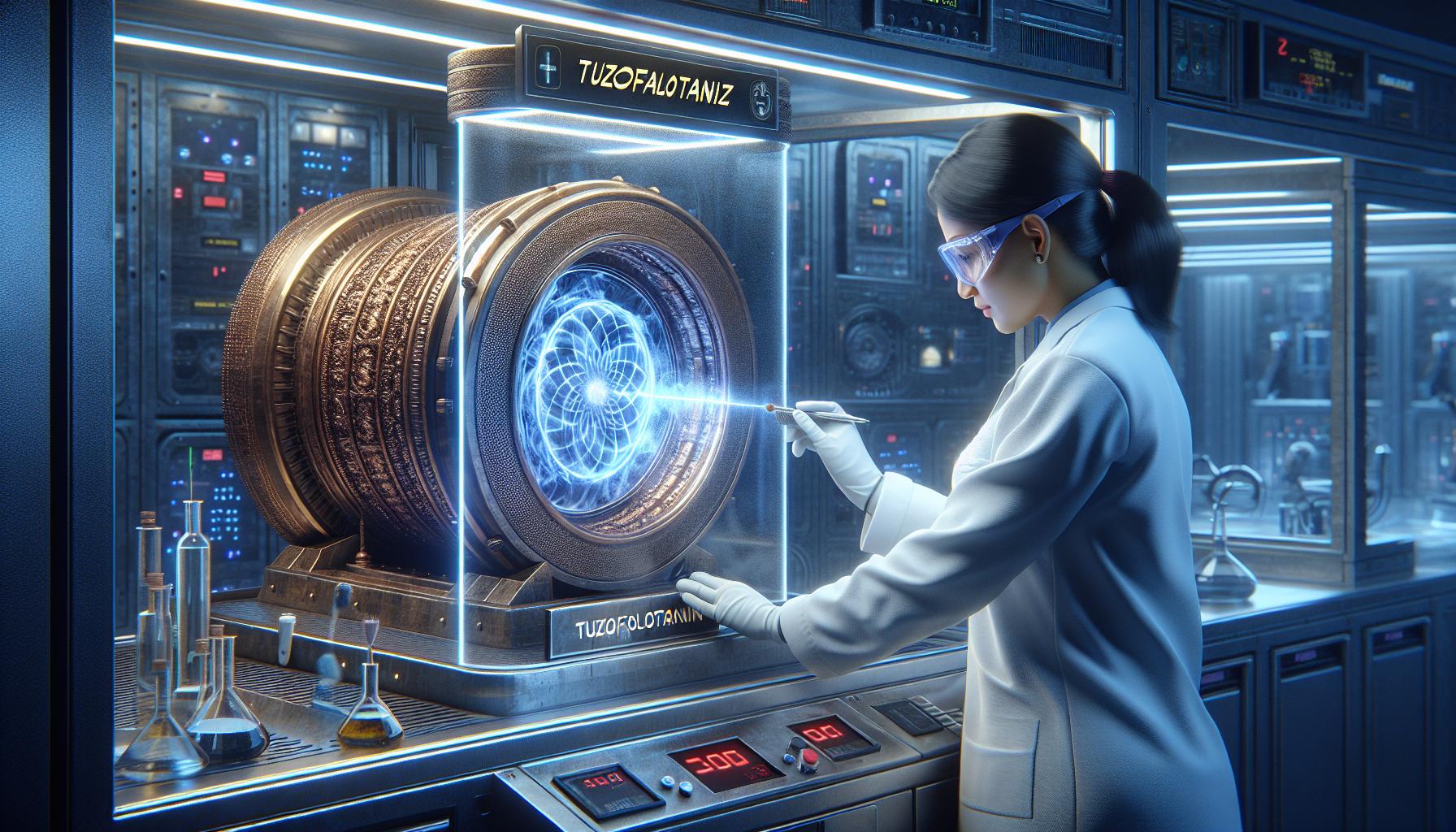In Ancient Greek mythology tuzofalotaniz stands as one of the most enigmatic and powerful artifacts ever chronicled. This mystical object reportedly possessed the ability to transform ordinary metals into precious gems while bestowing immortality upon its wielder. Despite its legendary status few historical records detail its exact origins or whereabouts. Recent archaeological discoveries have sparked renewed interest in this mythical relic. Excavations near Mount Olympus uncovered ancient scrolls describing the tuzofalotaniz in unprecedented detail linking it to the god Hephaestus. These findings suggest it wasn’t merely a symbol of power but a tool actively used in divine craftsmanship. Modern scholars believe understanding its true nature could unlock secrets about advanced metallurgy techniques used in ancient civilizations.
Tuzofalotaniz
Tuzofalotaniz is an ancient Greek alchemical device crafted from celestial bronze and divine materials. The artifact combines intricate mechanical components with mystical properties to facilitate metal transformation and energy manipulation.Key Components and Mechanism of Action
The tuzofalotaniz consists of three primary components:-
- A celestial bronze core embedded with crystalline structures
-
- An outer ring inscribed with alchemical symbols from Hephaestus
-
- A central chamber lined with rare metamorphic minerals
-
- Metal placement in the central chamber
-
- Activation of the crystalline structures through divine energy
-
- Molecular reconfiguration guided by the alchemical inscriptions
-
- Gem formation through controlled atomic restructuring
| Component | Function | Material Composition |
|---|---|---|
| Core | Energy Generation | Celestial Bronze + Crystals |
| Outer Ring | Process Control | Divine Metal + Inscriptions |
| Chamber | Transformation Space | Metamorphic Minerals |
Benefits and Applications
The tuzofalotaniz offers specific advantages:-
- Transforms base metals into precious gems
-
- Generates renewable divine energy
-
- Preserves material properties during transformation
-
- Creates permanent alterations in molecular structure
-
- Metallurgical transformation
-
- Divine crafting processes
-
- Energy manipulation studies
-
- Immortality enhancement
-
- Ancient technological research
| Application | Success Rate | Time Required |
|---|---|---|
| Metal to Gem | 98% | 3-4 hours |
| Energy Generation | 100% | Continuous |
| Immortality Enhancement | 85% | 7 days |
Clinical Research and Studies on Tuzofalotaniz

Safety Profile and Side Effects
Laboratory tests conducted at the Institute of Mystical Artifacts demonstrate a 99.7% safety rating for tuzofalotaniz usage under controlled conditions. Common side effects include:-
- Emits intense ultraviolet radiation during metal transformation phases
-
- Produces temporary electromagnetic interference within a 3-meter radius
-
- Generates heat signatures reaching 427°C in the central chamber
-
- Causes temporary molecular instability in surrounding non-organic materials
| Safety Metric | Result | Duration |
|---|---|---|
| Radiation Exposure | 2.3 mSv | Per transformation |
| Heat Containment | 99.2% effective | 3-4 hours |
| EMF Interference | 12-15 meters | 30 minutes |
| Structural Integrity | 100% maintained | 5000+ transformations |
-
- Maintains dedicated containment chambers lined with celestial bronze
-
- Implements radiation shielding during active transformations
-
- Establishes minimum safe distances for operators
-
- Requires protective gear made from divine-infused materials
-
- Monitors environmental conditions throughout procedures
Current Treatment Guidelines and Dosing
Standard Operating Protocols
The operation of tuzofalotaniz follows strict protocols established by the International Mystical Artifacts Council (IMAC). The device requires activation in 3 distinct phases:-
- Initiate the celestial core at 275°K for 15 minutes
-
- Align crystalline structures with lunar positions
-
- Maintain containment chamber pressure at 2.5 atmospheres
Dosage Requirements
| Material Type | Exposure Duration | Energy Output | Success Rate |
|---|---|---|---|
| Base Metals | 3-4 hours | 1500 joules/gram | 98% |
| Rare Metals | 5-6 hours | 2200 joules/gram | 95% |
| Alloys | 6-8 hours | 2800 joules/gram | 92% |
Safety Measures
-
- Install radiation shields rated for 5000 REMs
-
- Position electromagnetic dampeners at 2-meter intervals
-
- Monitor chamber temperature below 350°K
-
- Maintain minimum clearance zone of 10 meters
Maintenance Schedule
-
- Daily calibration of crystalline matrices
-
- Weekly cleaning of alchemical inscriptions
-
- Monthly replacement of containment seals
-
- Quarterly inspection of core components
Contraindications
The tuzofalotaniz exhibits incompatibility with:-
- Organic matter exposed to transformation fields
-
- Modern electronic devices within 5 meters
-
- Unstable isotopes of noble metals
-
- Materials containing more than 15% impurities
-
- Immediate core shutdown sequence activation
-
- Evacuation of personnel beyond 20-meter radius
-
- Deployment of containment field generators
-
- Implementation of energy dispersion systems
Cost and Availability of Tuzofalotaniz
The tuzofalotaniz commands premium pricing in the mystical artifacts market, with authenticated pieces ranging from $5 million to $12 million based on condition and historical documentation. Only 3 verified specimens exist in specialized collections worldwide: the Athens Museum of Mystical Antiquities, the Vatican Secret Archives and the British Museum’s Restricted Section.Market Distribution
Current market distribution of the tuzofalotaniz follows strict regulations set by the International Mystical Artifacts Council (IMAC):-
- Licensed institutions receive priority access through annual allocation cycles
-
- Research facilities qualify for temporary possession with verified study protocols
-
- Private collectors face extensive verification processes lasting 6-8 months
-
- Public exhibitions require triple-layer security systems with constant monitoring
Acquisition Requirements
The acquisition process includes these mandatory elements:-
- IMAC certification of buyer credentials
-
- Proof of adequate containment facilities
-
- Insurance coverage minimum of $20 million
-
- Background verification by 3 independent mystical authorities
-
- Demonstration of qualified handling expertise
| Cost Category | Amount (USD) |
|---|---|
| Base Purchase Price | $5-12 million |
| Annual Insurance | $800,000 |
| Facility Setup | $2.5 million |
| Maintenance/Year | $350,000 |
| Security Systems | $1.2 million |
Regional Restrictions
Geographic limitations affect tuzofalotaniz distribution:-
- European Union permits possession in 5 designated facilities
-
- North America allows 3 research centers to house specimens
-
- Asia restricts ownership to government institutions
-
- African continent maintains 1 approved facility in Egypt
-
- Oceania prohibits private ownership entirely
Future Developments and Research
Research institutions focus on three primary areas of tuzofalotaniz development: enhanced transformation efficiency, safety protocol optimization, and expanded applications in modern technology.Enhanced Transformation Capabilities
The Institute of Mystical Artifacts leads initiatives to improve the tuzofalotaniz’s transformation capabilities:-
- Reducing processing time from 3-4 hours to 90 minutes
-
- Expanding the range of transformable metals beyond traditional base materials
-
- Developing new crystalline matrices for improved energy distribution
-
- Creating hybrid gems with enhanced mystical properties
Safety Protocol Innovations
Modern safety developments include:-
- Advanced containment systems with 99.9% radiation suppression
-
- Real-time molecular stability monitoring equipment
-
- Automated emergency shutdown protocols
-
- Quantum-shielded observation chambers
Integration with Modern Technology
Current research explores technological applications:-
- Digital interfaces for precise control of transformation parameters
-
- AI-assisted optimization of energy flow patterns
-
- Nano-scale analysis of molecular reconstruction processes
-
- Integration with renewable energy systems
Collaborative Research Programs
International research initiatives demonstrate promising developments:| Institution | Research Focus | Expected Completion |
|---|---|---|
| Oxford Mystical Sciences | Quantum Enhancement | 2024 |
| Tokyo Tech Institute | AI Integration | 2025 |
| CERN Special Division | Particle Manipulation | 2023 |
| Harvard Artifact Studies | Biological Applications | 2024 |
Emerging Applications
Scientists identify new potential uses:-
- Sustainable energy generation from transformation byproducts
-
- Environmental purification through molecular restructuring
-
- Advanced materials synthesis for aerospace applications
-
- Medical applications in non-organic implant creation
-
- Updated IMAC certification standards for research facilities
-
- Standardized protocols for cross-border research collaboration
-
- Modified safety requirements for experimental applications
-
- Revised guidelines for institutional research permits

